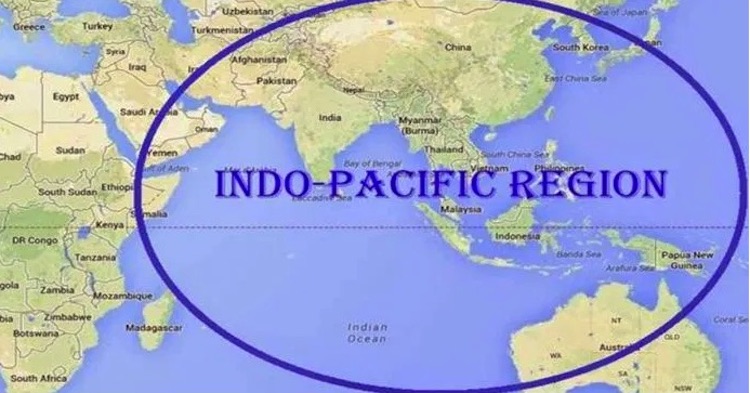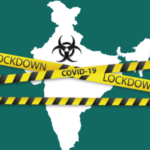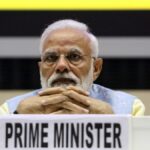
If someone wants to know and learn the importance of words in international defence, strategic, trade and diplomatic languages then the ‘Indo-Pacific’ a term coined by former Japanese PM Abe in 2007 to bring the Pacific ocean closer to Indian ocean and thus check a growing and aggressive China simultaneously comes handy. The term was also associated with ‘Quad’ a grouping of 4 countries Australia, India, Japan and the United States.
Why the word has got more traction and now is considered one of the most debated phrase in international strategic discussions is that it signifies a change in United States Foreign policy which has been busy with the ‘Middle East ‘ strategy and was not very keen in this part of the world governing India , China and the Indian oceans. Thus the “Indo-Pacific ‘ and ‘Quad’ has bought a full US and hence international attention to the shores connecting Japan to India and beyond on the eastern shore of the world. Besides it is now focused on ‘Indo-pacific’ rather than ‘Asia-pacific’ as earlier. With a new focus on the Indo-Pacific, the U.S. actively deployed strategic bombers and aircraft carriers in the Western Pacific in 2020. .
There are some recent developments that are happening wrt to the Indo pacific which have a greater ramification not only for India but for international peace and prosperity. It is important to note that after starting a bit hesitant, more and more countries are eyeing and taking Indo-Pacific and Quad grouping more seriously. Besides the 4 countries which pledged their support to the Quad, Germany, France and Britain are also showing early signs to support the initiative that is basically a front to Check and challenge China over multiple fronts including her Belt and Road project , South China seas and trade wars. The Japanese foreign Minister Motegi has even considered Asean, and African countries besides Europe to be part of this initiative going forward.
Recent Developments:
The Indo pacific have again come to news this week as Japan has gifted India some strategic items. On March 26, Japanese Ambassador Satoshi Suzuki and C.S. Mohapatra, an additional secretary at India’s Ministry of Finance, exchanged notes in New Delhi concerning grant aid of 4.02 billion yen, or $36 million, to install a battery energy storage system at the Phoenix Bay Power House on the island of South Andaman to utilize renewable energy and stabilize energy supply.
The island currently relies on diesel-generated power, which is expensive to run and emits greenhouse gases. With the new battery in place, the plant will be able to generate 30 megawatts of electricity by 2026 and reduce 2,683 tons of carbon dioxide a year, according to an announcement. While the $36 million grant is not large, analysts Nikkei reached were in unison on the significance and the symbolism.
“The real advantage the Andamans provide to India is the ability to conduct surveillance over critical waters,” said Darshana Baruah, an associate fellow with the South Asia Program at the Carnegie Endowment for International Peace. “The islands offer unparalleled advantage in surveillance and monitoring the Malacca Strait. It is also close to the Straits of Indonesia, the alternate route into the Indian Ocean, especially for submarines,” she said. “A coherent monitoring and response mechanism will help India detect Chinese vessels upon their entry into the Indian Ocean.”
It must also be noted that in September 2020, the U.S Navy long-range anti-submarine warfare and maritime surveillance aircraft P-8 Poseidon refueled at an Indian base in the Andaman and Nicobar Islands for the first time.
Another development taking place is about the Japanese Prime Minister Yoshihide Suga is considering trips to India and the Philippines during Japan’s spring holidays, at the end of this month.
Suga, who would be meeting India’s Prime Minister Narendra Modi in person for the first time, hopes to reaffirm cooperation with the two countries, bearing in mind China’s growing maritime presence in the Asia-Pacific region.
It must also be noted that China has been playing aggressive tactics not only with Taiwan, but also with Vietnam and the Philippines. Interestingly just a few days back on 4th April it was reported that Chinese aircraft carrier Liaoning sailed between Japanese Okinawa and Miyako islands. Accompanying the Liaoning were one Renhai class stealth guided missile destroyer, two Luyang III class guided missile destroyers, one Jiangkai II multi-role frigate and one Fuyu class fast combat support ship.
The movements come as the U.S. Navy intensifies cooperation with the Quad partners of Japan, India and Australia in the Indo-Pacific. On the heels of a visit to India by U.S. Defense Secretary Lloyd Austin, the Theodore Roosevelt Carrier Strike Group conducted joint multi-domain operations with India’s navy and air force in the Indian Ocean on March 28 and 29.
Conclusion:
AS India, Japan , Australia and the United States further cement their Quad joint initiative, China will increasingly fear containment of herself. It has already demonstrated her intentions through war ships and diplomatic exchanges. While it is too early for a full fledged war small skirmishes cannot be ruled out as China will try to create fear among many of her neighbours and especially India, Japan , Taiwan, Vietnam ,,etc..
India has to be watchful and alert as always. While we recommend the Quad initiative it must be not be allowed to be seen as a full grown platform against China. India has to engage China through bilateral talks and trade. After Galwan China has shown some interest in engaging India through talks and trade. Perhaps it is evaluating India’s position vise versa United States and would like to see that India does not go wholeheartedly with the US and Quad. This is going to be the biggest diplomacy test for India.
While the outcome cannot be predicted, it is always good to direct the results rather than allowing them to happen randomly. Whether one likes or not India has to play the role of good neighbour politics and policies with China. China has never shown full seriousness towards India so far but with the Quad initiative things might change albeit temporary India has to play the hard ball with diplomatic finesse to get out of the trap of China – Pakistan but in a way that is seen as a neutral position to all observers.
Dr Asheesh Shah
Samanvaya.
| References: Nikkei Asia, China US Focus.com and others. |


